

On June 5, 2022, World Environment Day, Chinese business jet company Hualong Airlines announced its carbon neutrality goal. Based on the emission characteristics of the aviation industry and its own digital technology advantages, it will achieve carbon neutrality in its own fleet, ground support business and office operations in 2025. It has driven more than 20% of the custodial aircraft to achieve carbon neutrality in flight operations, and will eventually achieve carbon neutrality in the overall business of Hualong Airlines in 2035. This is the first carbon neutral plan announced by China's business jet industry.
To reduce greenhouse gas emissions has become the key issues of sustainable development, "peak carbon up to 2030 years ago, 2060 years ago carbon neutral" is the commitment of the international community in our country, hualong air positive response national "double carbon" goal, is the first in the executive industry put forward the "green air" development strategy of the company, Zeng completed China's first "carbon neutral" business jet flight on April 22 this year, which promoted the research and exploration of carbon emission reduction in the business jet industry.
According to ISO 14064-1 and with reference to the "Greenhouse Gas Accounting System Corporate Accounting and Reporting Standards" formulated by the World Resources Institute, Hualong Airlines takes 2021 as the base year to conduct a comprehensive investigation and quantification of the company's carbon emissions. Including aircraft trading, aircraft trusteeship, charter flights, aviation ground agency and business jet building operations, the total GHG emissions from the full-process business jet services provided by Hualong Airlines are 31,612.14 tons, of which Scope 1 emissions are 28,282.48 tons and Scope 2 emissions are 28,282.48 tons. Scope 3 emissions, including commuting, travel, used items, and waste disposal, were 2,984.49 tons.
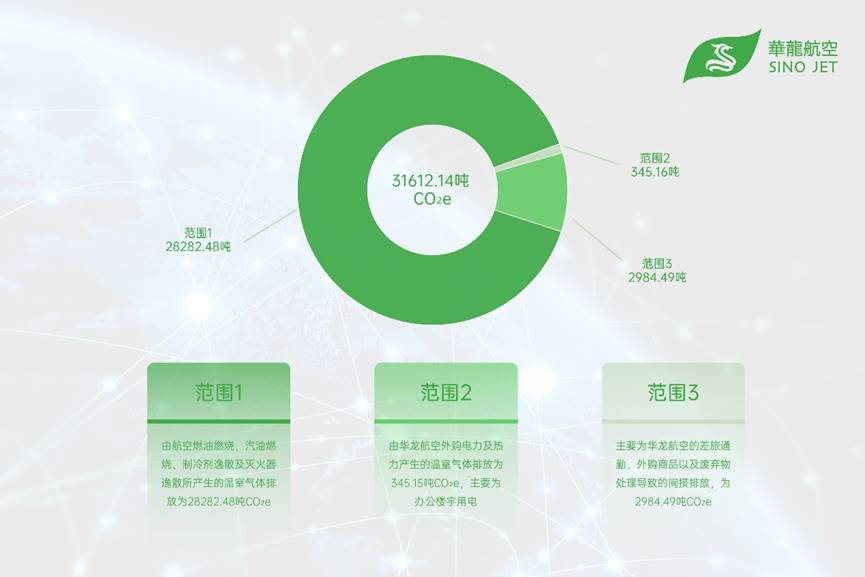
Based on the 2021 annual greenhouse gas emissions report, Hualong Airlines has constructed a scientific path to achieve the carbon neutrality goal. It will follow the principle of "energy conservation and emission reduction first, offset is secondary", and plans to build on the existing green practices. Through digital aviation construction, sustainable energy application, green office buildings, green transportation, green supply chain, carbon offset to promote the goal of carbon neutrality as scheduled.
Speeding up the realization of carbon neutrality at the level of independent operation is the primary goal of Hualong's carbon neutrality action. At present, Hualong Airlines has started to develop a carbon management system suitable for business aircraft enterprises. Combining with the information management system of the whole process of aircraft operation, Hualong Airlines has created a scientific and traceable green aircraft operation mode, and promised to achieve carbon neutrality in its own fleet flight, aviation ground support and daily office by 2025. In terms of per capita carbon intensity of the company, it will achieve a reduction of 20% by 2035 and 40% by 2050.
At the same time, Hualong Airlines proposed to drive more than 20% of its managed aircraft to become carbon neutral in flight by 2025, and to achieve carbon neutral in the overall business, including aircraft custody, by 2035. The business ecology of Hualong Airlines connects giant enterprises in various fields. Through the application of digital technology, Hualong Airlines will add carbon neutral service options to the flight system of the client, and through incentive policies, it will positively influence business jet owners and related industrial chains to accelerate the pace of carbon neutrality.

According to Hualong's carbon emission data, its main emission source in 2021 was fossil energy use, among which jet fuel emissions accounted for 88.53%. Therefore, the selection of energy-efficient business jet models, increasing jet fuel efficiency and building a green energy application system are key steps for Hualong Airlines to achieve carbon neutrality.
Currently, only a handful of airports around the world, mainly in Europe and North America, offer conventional sustainable aviation fuel (SAF) refills. The "Civil aviation" + "green and low-carbon" ecosphere development route map released by the Civil Aviation Administration of China in January 2022 shows that it plans to significantly increase the use of SAF in 2030. In this context, Hualong Airlines has reached an intention with China Aviation Oil that when it opens SAF refueling service in any domestic airport, Hualong Airlines will give priority to the application as a pilot unit. In addition, Hualong Airlines promises that when the airport in operation can provide SAF refueling service, it will give priority to SAF.
Hualong Airlines said that the realization of carbon neutrality by business jet companies is a positive reflection of corporate social responsibility. Its strategic significance lies not only in its own energy saving and emission reduction, but more importantly, in connecting the upstream and downstream of the industry through business jet to promote the technological research and development and application innovation of all parties in energy saving and emission reduction. In the future, Hualong Airlines will continue to discuss the application of energy conservation and emission reduction technologies with its industrial chain partners such as aircraft manufacturers, fuel supply agencies, airports and ground transportation companies, so as to explore more sustainable development opportunities, help upgrade traditional industries and contribute China's efforts to the global fight against climate change.
2022年6月5日,世界环境日,中国公务机公司华龙航空公布碳中和目标,将立足航空业排放特点和自身数字化技术优势,于2025年实现自有机队、地面保障业务及办公运行碳中和,并于此前带动20%以上的托管飞机实现航班运行碳中和,最终将于2035年实现华龙航空整体业务碳中和,这是中国公务机行业首次宣布的碳中和规划。
减少温室气体排放已经成为全球可持续发展的关键议题,“2030年前实现碳达峰,2060年前实现碳中和”是我国对于国际社会的郑重承诺,华龙航空积极响应国家“双碳”目标,是公务机行业中最早一批提出“绿色航空”发展战略的公司,曾于今年4月22日完成中国首次“碳中和”公务机飞行,推动了公务机行业对于碳减排的研究与探索。
依据ISO 14064-1,参考世界资源研究所制定的《温室气体核算体系企业核算与报告标准》,华龙航空以2021年为基准年,对公司运行的碳排放进行全面排查和量化。包括飞机交易、飞机托管、包机、航空地面代理及公务机楼运营,华龙航空提供的公务机全流程服务所产生的温室气体总排放量为31612.14吨,其中范围一排放为28282.48吨,范围二排放为345.16吨,包括通勤、差旅、使用物品以及废弃物处理等在内的范围三排放为2984.49吨。

基于2021年度温室气体排放报告,华龙航空构建了碳中和目标的科学实现路径,将遵循“节能减排优先、抵消为辅”的原则,计划在已有的绿色实践基础上,通过数字航空建设、可持续能源应用、绿色办公楼宇、绿色交通、绿色供应链、碳抵消六个方面来推动碳中和目标的如期实现。
加快实现自主运营层面的碳中和,是华龙航空碳中和行动的首要目标。目前,华龙航空已经着手开发适用于公务机企业的碳管理系统,结合飞机运行全流程信息化管理系统,打造科学、可追溯的绿色飞机运行模式,承诺在2025年实现自有机队飞行、航空地面保障和日常办公方面的碳中和。在公司人均碳排放强度方面,将于2035年实现下降20%,2050年实现下降40%。
同时,华龙航空提出于2025年前带动20%以上的托管飞机实现飞行碳中和,于2035年实现包括飞机托管在内的整体业务碳中和的目标。华龙航空的业务生态连接着各领域的巨头企业,将通过数字技术应用,在客户端的飞行系统中加入碳中和服务选项,并通过奖励政策,积极影响公务机持有企业及相关产业链加速迈进碳中和的步伐。
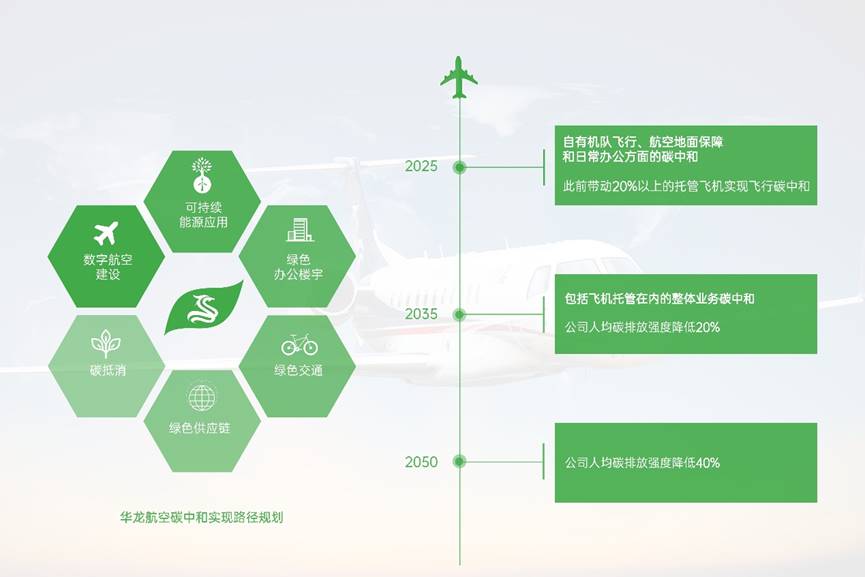
根据华龙航空碳排放数据显示,其2021年的主要排放源为化石能源使用,其中航空燃油排放量占比为88.53%。因此,选购高能效公务机机型、增加航空燃油利用效率以及建设绿色能源应用体系是华龙航空实现碳中和的关键一步。
目前,全球仅极少数机场能够提供常规的可持续航空燃料(SAF)的加注服务,主要集中在欧洲和北美。中国民航局在2022年1月发布的“民航”+“绿色低碳”生态圈发展线路图显示,计划在2030年大幅提高SAF的使用。在此背景下,华龙航空已与中航油达成意向,当其在国内任意机场开设SAF加注服务时,华龙航空将优先作为试点单位应用,此外,华龙航空承诺当所运行机场能够提供SAF加注服务时,将优先选用SAF。
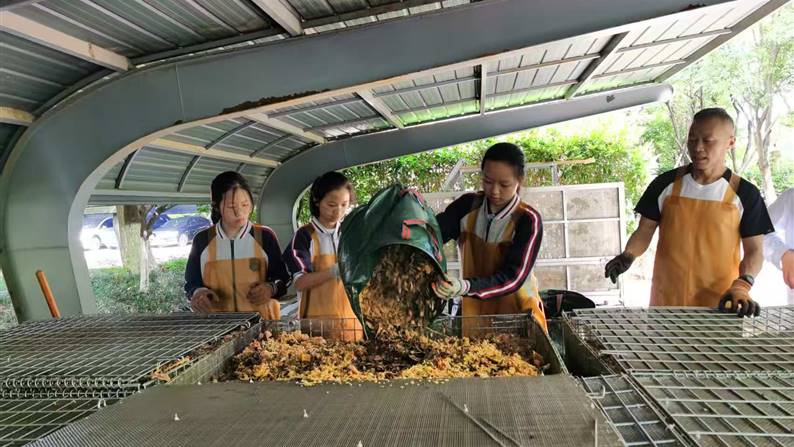
零废弃学校建设之厨余垃圾篇
10-24 · 来源:中国浙江省宁波市鄞州第二实验中学 · 作者:中国浙江省宁波市鄞州第二实验中学
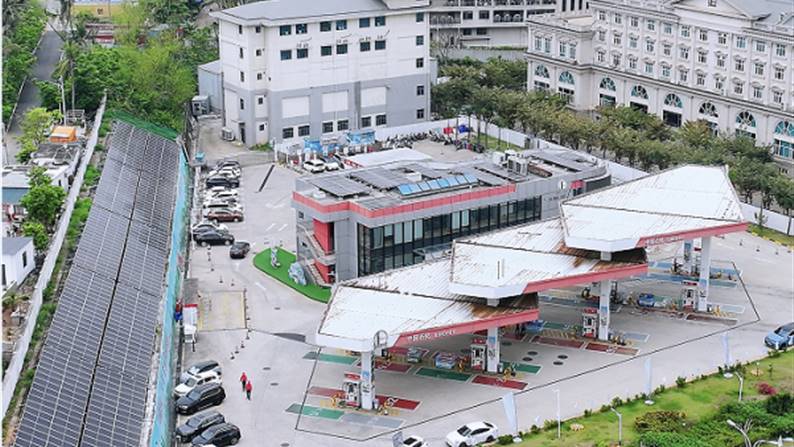
能源至净,生活至美,积极打造碳中和
10-24 · 来源:中国石化销售股份有限公司海南海口石油分公司 · 作者:中国石化销售股份有限公司海南海口石油分公司
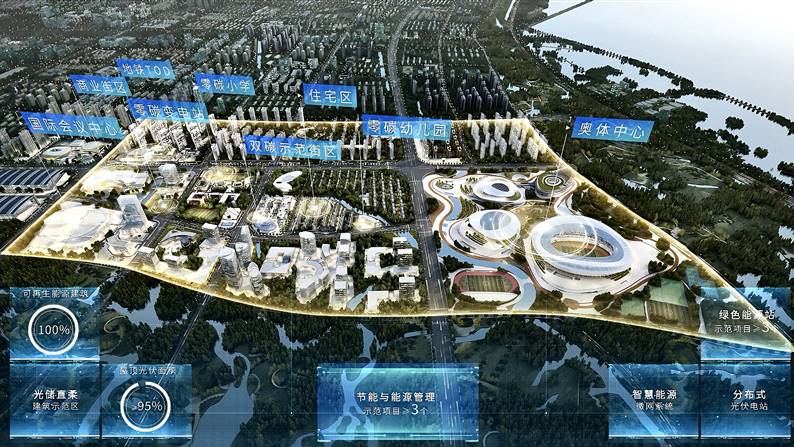
无锡中瑞低碳生态城
10-23 · 来源:无锡中瑞低碳生态城 · 作者:无锡中瑞低碳生态城